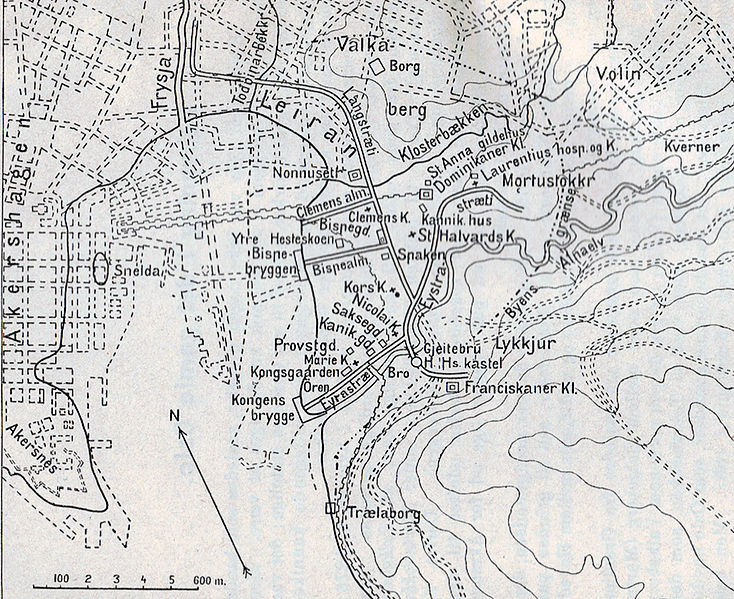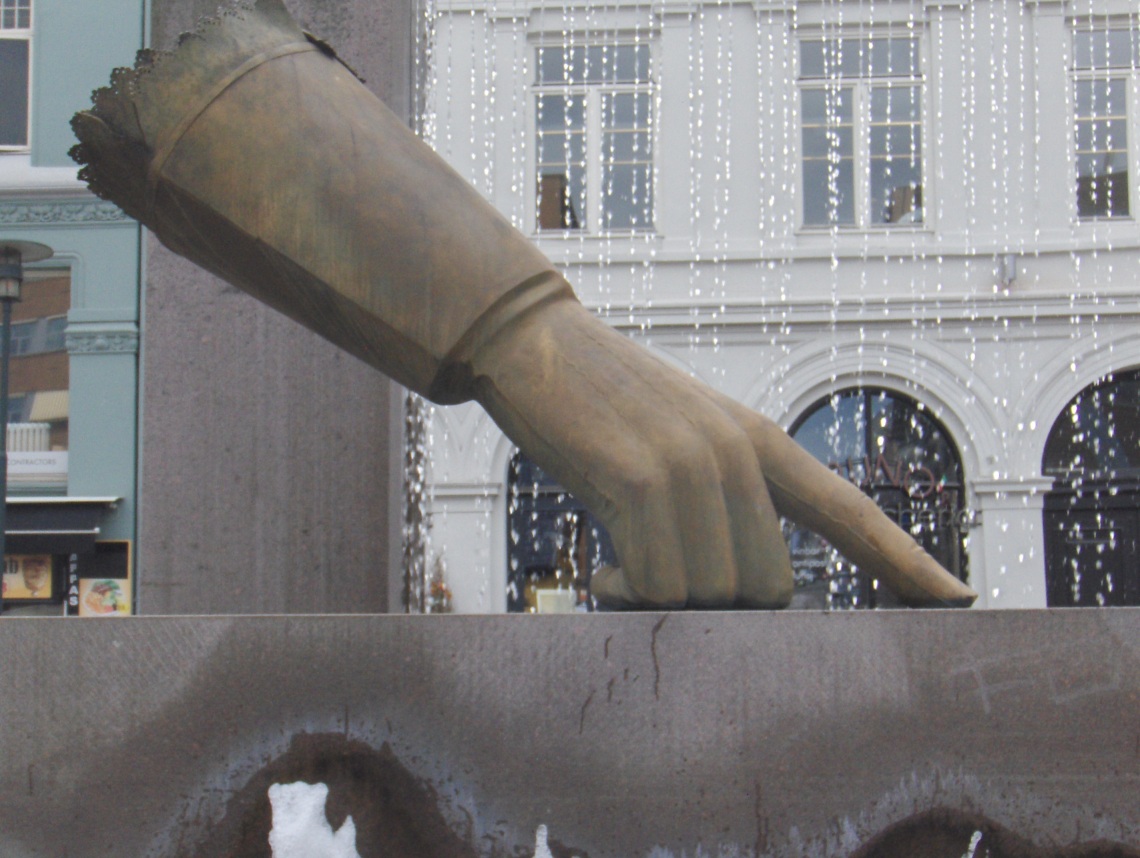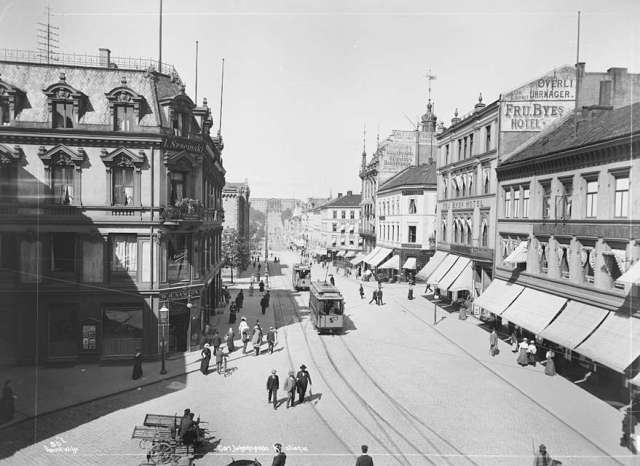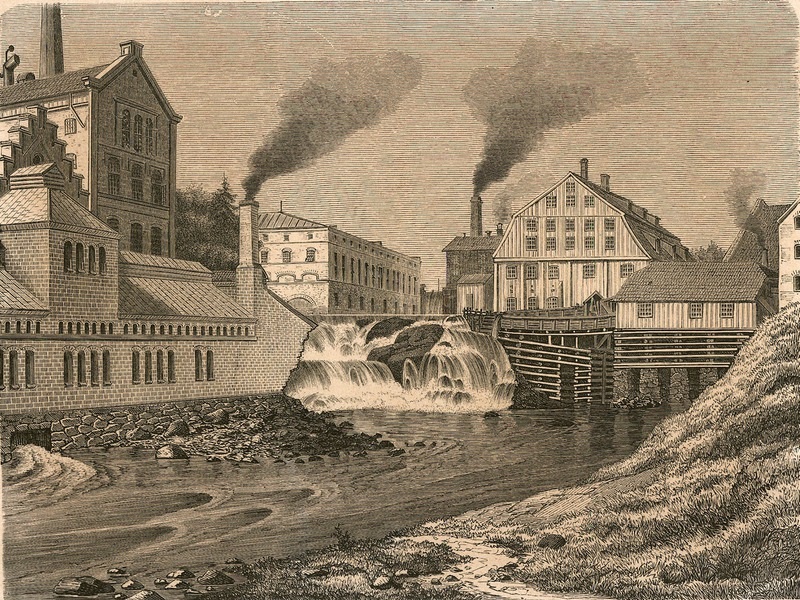The history of Oslo is truly fascinating. While today the city is very modern and there may seem like there are few traces of its beginnings, there are hints of history everywhere.
Here’s my summarised history of Oslo!
Humble Beginnings
Oslo is one of the oldest places in Norway; the area around the Oslofjord has been inhabited since the last ice age due to its rich agricultural land. The oldest settlements date back to the Stone Age and the Bronze Age. Historically the area was called Viken, which means ‘the bay’.
It’s believed that the Oslofjord was an important place for the Vikings; this is mostly because three Viking ships have been found in the area. These are now on display at the Viking Ship Museum. The first church, St. Clements Church (Klemenskirken), was built in Oslo around the year 1000. Sadly the church is no more; its ruins can be seen in the Middelalderparken just outside the city centre.

Oslo wasn’t officially founded until 1049. It was founded by King Harald Hardråde (Harald Hardruler), but it was his son, Olav Kyrre (Olav the Peaceful, who also founded Bergen), who set up a cathedral and a bishopric. Oslo wasn’t where it is today; rather it was founded closer to the region around Ekeberg and where the Barcode is today (the region called Gamle Oslo (Old Oslo) highlights this).

Throughout the 12th century, cathedrals and a cathedral school were built around the city. This includes Mariakirken, which would’ve looked similar to the church in Bergen. Sadly, like St. Clements, only its ruins remain.
At the time it was Trondheim that was the capital of Norway. In 1219, the capital moved to Bergen. It wasn’t until 1299 that Oslo got its title as the Capital of Norway.
The Capital of Norway
In 1299, King Håkon V decided to move from Bergen to Oslo, and with that, the capital moved. He cemented the city’s status as the capital when he had the Akershus Fortress built in 1299.
Everything changed in 1350 when the Black Plague came to Oslo. Around half of the town’s population passed away, and the churches began to lose income. This is around the time that the Hanseatic merchants came in to take over trade, and the churches fell into ruins.
The entire country had lost a lot during the Plague, and because of that, it was forced into a Danish union.
Danish Union, Fires, and Kristiania
The Kalmar Union put the three Scandinavian countries together in 1380, and during this time trade in Oslo was dominated by Hanseatic merchants and the town had little going on.
In 1536, the Danish and Norwegian union became a formal coalition, and the capital proper was now Copenhagen – though Oslo remained a symbolic capital. Due to the Reformation, in which Norway converted from Catholic to Lutheran, many of the old churches (most of which were already deteriorated) were destroyed by the Danes to make way for Lutheran churches. There are many ruins of churches in Gamle Oslo (the old town) today.
In 1624, the city changed forever. A massive fire burned for three days, destroying most of the city as it was built in timber. After the fire, King Christian IV of Denmark decided that, rather than rebuilt the old city, he was going to move it and build a whole new city and name it after himself. So, he did. And so Kristiania was born. At the time, it was spelt Christiania, but from 1877 it was spelt Kristiania.

Inspired by contemporary city planning, Kristiania was laid out in a grid close to Akershus Castle. The architecture of the time was Renaissance, and there are glimpses of this style still visible in the old centre of Kristiania. Akershus Fortress was also modernised and converted into a renaissance castle by Christian IV. All citizens and shops were strongly encouraged to move their businesses and homes to the new city, and they did. Around this time, the lower classes started to settle a little out of the city, near Vaterland and Grønland near the Old Oslo area.

The area of Oslo today called Kvadraturen (the quadrature) is where King Christian IV moved the town. The oldest buildings in Oslo can be found here, including Kristiania’s first town hall and the oldest restaurant, Cafe Engebret.
It wasn’t until the 18th century that Kristiania started to see true growth when the (constant) wars between Denmark and Sweden boosted the town as a major shipbuilding and trading port.

19th Century Capital & Growth
In 1814, when Norway left the Danish union and was forced into a personal union with Sweden, Kristiania was re-instated as the capital. The 19th century was a period of massive growth for Kristiania; with its status back, several state institutions were established including the Bank of Norway (1828), the Royal Palace (1848) and the Storting (1866). In 1859, many of the surrounding areas were incorporated into Kristiania – including Old Oslo, which at the time was just called Oslo.

The population increased dramatically in the 19th century – from 10,000 in 1814 to 230,000 in 1900. Finally, Kristiania overtook Bergen in terms of population. There was a spectacular building boom during the end of the 19th century, and many new apartments were built around the city centre.

Industry also rose dramatically in the 19th century, especially along the Aker River (Akerselva). Various industries were here, but they were primarily timber and fabrics. This is due to the number of waterfalls on the river, which gave power to numerous industry companies in Oslo.

Oslo returns
The city and municipality used the name Kristiania until 1 January 1925, when the name was changed back to Oslo. The reason the name was changed is because, after Norway became completely independent in 1905, the locals thought it was inappropriate to have the capital named after a Danish king.
World War II
During the Second World War, Oslo (like the rest of Norway) was occupied by German forces. Oslo was one of the first cities in Norway to be occupied; on 9 April 1940 the German ships made their way down the Oslofjord, and while the fortress Oscarsborg was able to sink a major warship and delay the occupation long enough for the King and government to escape, the city was occupied later that day.

During the war, the main headquarters for the Germans was Victoria Terrasse, a beautiful building close to the Royal Palace. It was in this building that officers held the interrogation centre for all prisoners in Oslo, and the place became synonymous with torture and abuse. On occasion, prisoners jumped out of windows to their death while waiting to be interrogated. Allied bombers tried to destroy it twice, but missed and hit civilian targets.

All ships carrying Jews left for mainland Europe from the Oslofjord, and the German Army executed members of the Norwegian resistance groups at Akershus Fortress. After the war, eight Norwegian traitors who had been tried for war crimes were executed at the fortress, including Vidkun Quisling.
Modern Oslo

After the war, Oslo’s City Hall was finished in an area that had previously been a slum. This was also where Aker Brygge was revitalised between 1982 and 1998 and built up as a modern suburb.
Oslo’s postwar absorption of surrounding towns and suburbs gives us the sprawling city we see today. However, despite this growth, it wasn’t until the discovery of the Ekofisk oil field on Norway’s Continental shelf, that the economy of Oslo changed for good. Oslo transformed into one of the world’s wealthiest and liveable cities.
Oslo is the most ethnically diverse city in Norway, with 40% of the population first or second-generation immigrant.

In 2011, Oslo was hit by a terrorist attack carried out by a right-wing extremist. A bomb was detonated in the Government quarter, damaging several buildings including the building that houses the Office of the Prime Minister. Eight people were killed in the attack. The terrorist then disguised as a police officer and killed 69 Labour party-affiliated activists on the island Utøya, about 45 minutes out of the city.

1 Comment on The History of Oslo